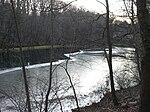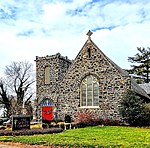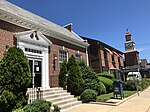Henry Foundation for Botanical Research
The Henry Foundation for Botanical Research is a nonprofit botanical garden of 50 acres located in Lower Merion Township, Pennsylvania at 801 Stony Lane, Gladwyne. The garden was established in 1948 by botanist and plant explorer Mary Gibson Henry (1884-1967) for plants that she collected through remote areas of the West, Midwest, and Southeast United States. The garden has been maintained by the Foundation since 1950.Today the garden contains scenic plantings, gardens, and trails for walking and horseback riding set among steep hills along Rock Creek, near the Schuylkill River. It also contains 15 taxa of native magnolias, in a program established under the auspices of the North American Plant Collections Consortium (NAPCC) to help broaden the genetic diversity of organized botanical collections.
Excerpt from the Wikipedia article Henry Foundation for Botanical Research (License: CC BY-SA 3.0, Authors).Henry Foundation for Botanical Research
Merion Square Road, Lower Merion Township
Geographical coordinates (GPS) Address Nearby Places Show on map
Geographical coordinates (GPS)
| Latitude | Longitude |
|---|---|
| N 40.033333333333 ° | E -75.283333333333 ° |
Address
Merion Square Road 974
19035 Lower Merion Township
Pennsylvania, United States
Open on Google Maps








